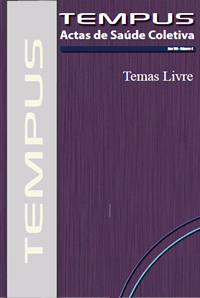Abstract
Objective: To evaluate the prevalence of Burnout syndrome (BS) and dimensions – emotional exhaustion (EE), depersonalization (DE) and low professional accomplishment (LPA) - among intensive care professionals and to identify their associations with individual, organizational and occupational variables. Methods: Analytical study among intensive care of university hospital in Montes Claros, Minas Gerais. It was used for data collection Maslach Burnout Inventory, Brazil Economic Classification Criterion and questionnaire “individual, occupational and organizational variables”. Results: The prevalence of SB and dimensions (EE-DE-LPA) were respectively 34,0%, 16,9%, 19,4% and 17,9%. By multivariate analysis reported a higher chance of developing SB between men (OR:12.46) to the women; people who identify work as “sometimes / often / always” stressful (OR:48,26) those that identify as “never/almost never” stressful, and people who “do not agree nor disagree/partly agree/strongly agree” that they would choose another profession with the same pay (OR:34,50), to those who “disagree completely/partly” in the selection of another profession. Higher chance of developing EE: between “unmarried/divorced /separated” (OR: 0,07) to the married; between those who have “poor/fair” motivation to work (OR:60,70) to those whose motivation is “good/very good/excellent”; and among those who realize that “sometimes/often/always” people are treated unequally (OR:27,04), to those who realize that “never/almost never” there is unequal treatment. Higher chance of developing DE: among those who “never consumed alcoholic beverages” (OR:0,07) to those who “consume/do not consume anymore”, and among those with “poor/fair” professional expectation (OR:6,09), those with “good/very good/excellent” expectation. Conclusion: The recorded prevalences are alarming, being that SB and dimension were associated to individual and occupational variables and EE was associated with the individual, occupational and organizational variables.A Tempus garante critérios rigorosos, por meio de avaliação sistemática. Os autores se responsabilizam pela veracidade e ineditismo do trabalho cabendo a eles a cessão de direitos de publicação à revista. A confiabilidade dos conteúdos e a marca própria de apresentação tem como objetivo uma comunicação personalizada, adaptada aos padrões da revista, na medida em que adota critérios de excelência exigidos por seus usuários e especialistas, considerando os rigores da comunicação científica. Os autores devem especificar sua contribuição individual na concepção, delineamento, execução do trabalho, análise ou interpretação dos dados, redação e aprovação final do manuscrito. Incluir Fontes de financiamento e de apoio logístico das pesquisas. Ao final da submissão do artigo, os autores devem enviar uma declaração de cessão de direitos de publicação à Revista TEMPUS , assinada e no formato PDF (Portable Document Format ): Modelo da declaração de cessão de direitos.
